
UNE and the Rachel Carson National Wildlife Refuge are using the funds to restore marshes in the Biddeford area
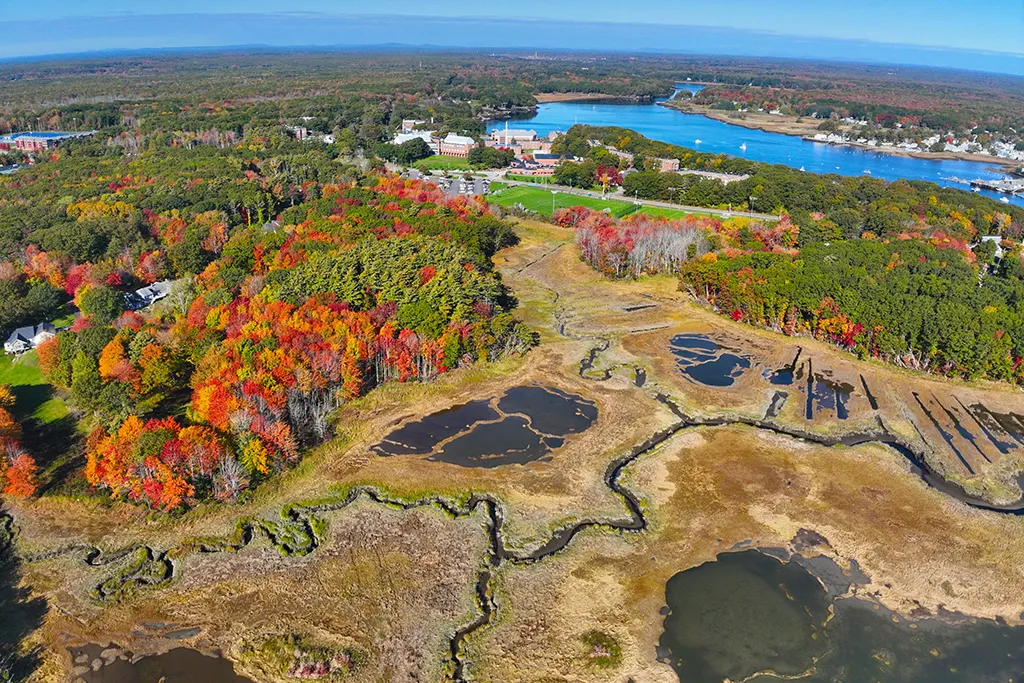
Biddeford Pool salt marshes, as seen from the sky. UNE’s coastal campus sits at back.
Salt marshes are essential coastal ecosystems. They lessen the violent impacts of storms, and they provide habitats for migratory birds and aquatic organisms.
But in Biddeford and surrounding areas, centuries of agricultural exploitation compounded with the effects of global climate change have left these ecosystems vulnerable, stripped of their sediment and slowly slipping beneath the rising seas.
“Sea level rise is happening faster than sediment and organic material can build on top of these marshes,” said Will Kochtitzky, Ph.D., assistant professor of geographic information systems (GIS) at the University of New England. “In a sense, we don't even know what these natural marsh ecosystems looked like because of centuries of human impact and human disturbance.”
To better understand the impacts of climate change on these crucial ecosystems, students and researchers from the University of New England and Rachel Carson National Wildlife Refuge (RCNWR) will share nearly $900,0000 in grant funding to map, restore, and monitor salt marshes in southern Maine as part of a new restoration effort.
The funding, from the Maine Natural Resource Conservation Program (MNRCP), is backing two restoration and monitoring projects in the Biddeford-Saco area to map and study the salt marshes.
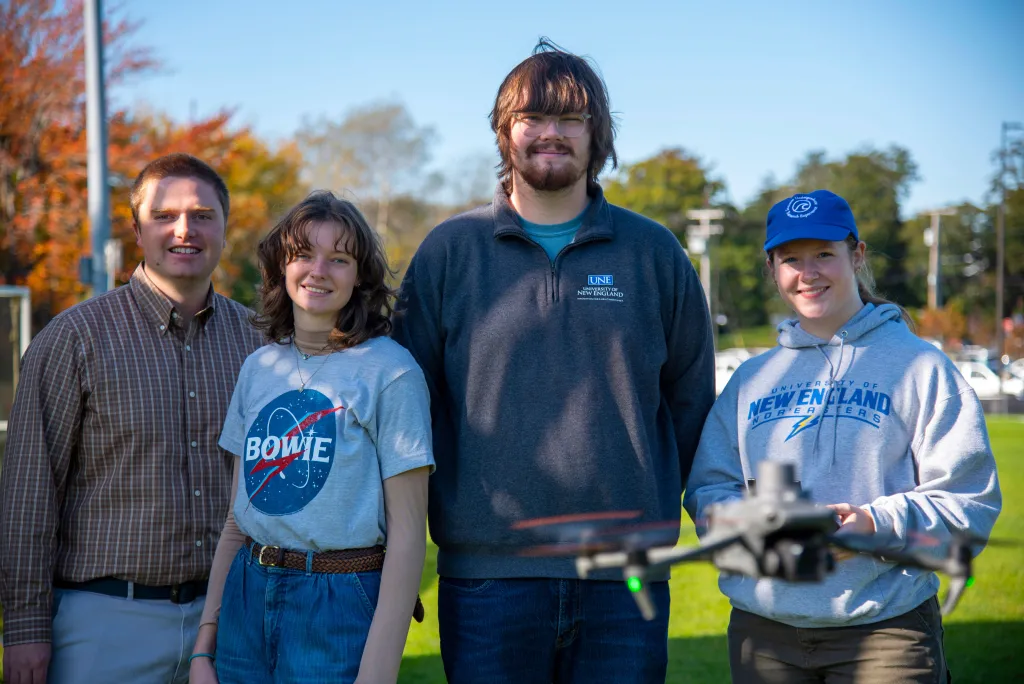
From left: Will Kochtitzky and student researchers Caroline Fales, Sam Walsh, and Katie DeWater.
The first project, a $240,411 grant to RCNWR and UNE, is funding the restoration of salt marshes in Biddeford Pool directly adjacent to the University’s Biddeford Campus. UNE will use a portion of the funds to track the current state of the salt marshes and quantify the restoration progress as biologists with RCNWR work to restore them.
The second grant, in the amount of $653,519, is funding a similar project to restore the marshes of Goosefare Brook between Saco and neighboring Old Orchard Beach (OOB).
In both projects, UNE students are using drones, cutting-edge tools in GIS, and remote sensing to map out and plot the salt marshes for researchers at RCNWR to better understand their current state and measure, in real time, as progress is made toward their restoration.
“Scientifically, we want to understand how we can best protect these marshes,” Kochtitzky said. “We want to understand how these ecosystems are changing over time to ensure their health in the future.”
The projects also allow students to hone their field research skills as they spend time in the marshes with U.S. Fish and Wildlife professionals and collect important data about marsh health.
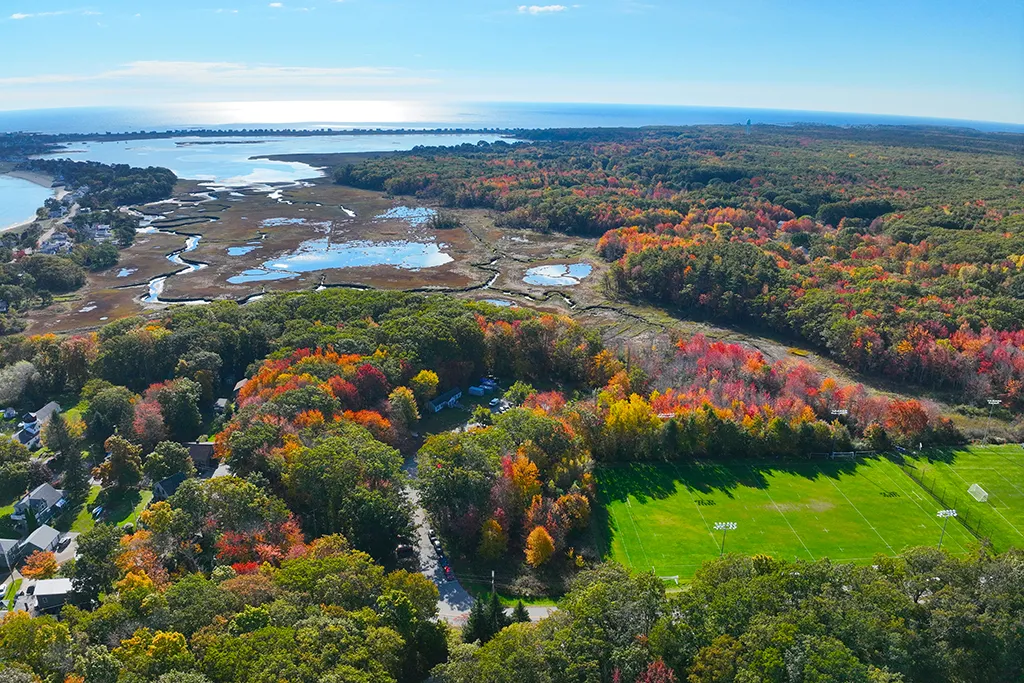
The marshes with Biddeford Pool in the background.
What’s more, the students are being paid for their efforts — some through the MNRCP grants and some through UNE’s Summer Undergraduate Research Experience (SURE), a grant program offered through the College of Arts and Sciences that funds interdisciplinary student research and stipends for students to live on campus while they work on their projects.
These internships allow students, including those minoring in GIS, to gain proficiencies in modern research practices through experiential learning opportunities in their own living laboratory.
Students will also benefit from recently awarded research funding through the Maine Space Grant Consortium. In January, Kochtitzky was granted $50,000 from the consortium to monitor the long-term and short-term impacts of climate change on coastal landforms in southern Maine — including Biddeford Pool and Goosefare Brook Marsh. The project, also in collaboration with RCNWR, will see students taking the lead on data collection, processing, and dissemination under Kochtitzky’s guidance.
“This is an amazing opportunity for our students to have hands-on experience, not just with a federal agency, but also in working with new and emerging technologies in GIS and learning how to conduct their own scientific studies,” Kochtitzky said. “And they’re doing it right on campus. How could we ask for a better place to do this work?”
Pam Morgan, Ph.D., professor of environmental studies at UNE, remarked that the partnership with Rachel Carson National Wildlife Refuge is a “win-win” for both the refuge and the UNE students involved.
“RCNWR staff get help with the important restoration work they are doing in our coastal marshes, and UNE students receive mentoring from professionals in the field while acquiring new skills that will benefit them when it comes time to search for employment,” she said.
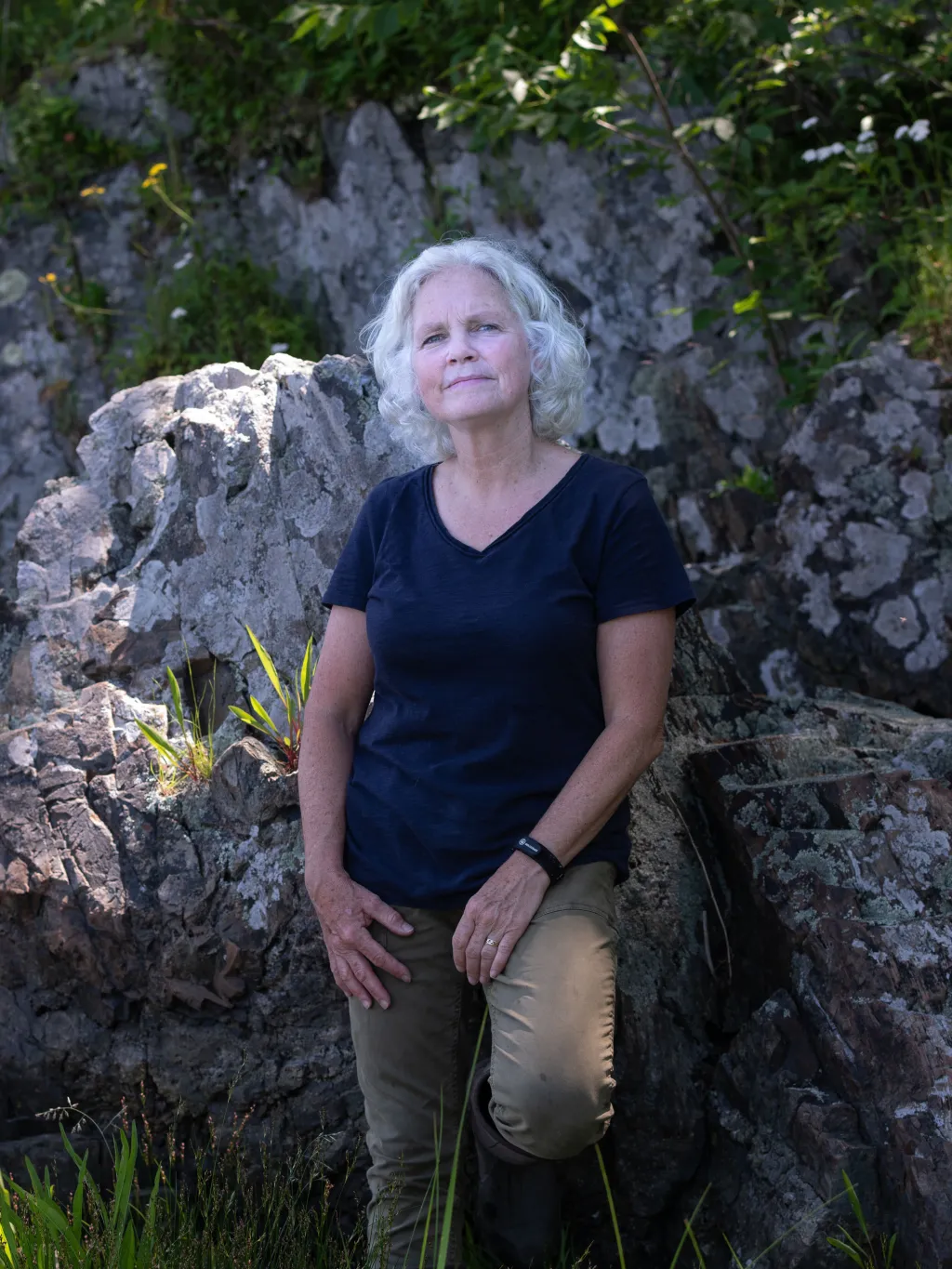
Pam Morgan, Ph.D.
A key player securing the grant funding, in partnership with UNE, is Susan Adamowicz, Ph.D., a land management research and demonstration biologist with the U.S. Fish and Wildlife Service, which administers RCNWR as part of the National Wildlife Refuge System.
Adamowicz said she is excited to work with UNE to “see the marsh like we never have before.”
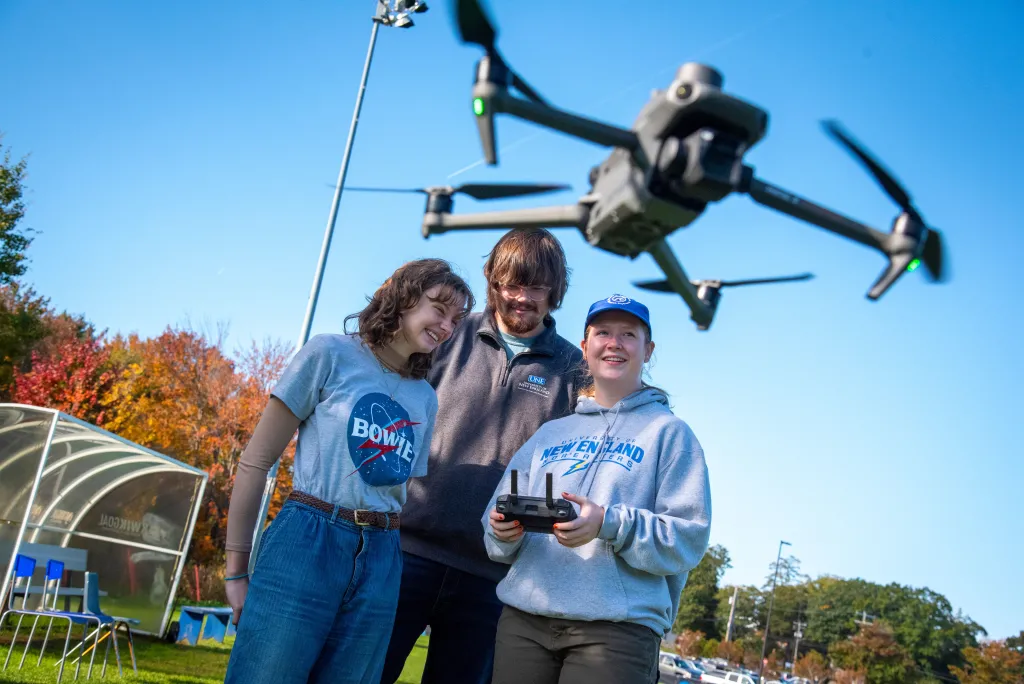
Students are using remote monitoring techniques to map the salt marshes and measure the restoration progress.
“It is incredibly important to engage with the next generation of conservation scientists because, ultimately, they will become better-informed citizens,” she said. “Regardless of your professions — whether you're a historian, or an artist, or a chemist, or a hydrologist, it doesn't really matter — the salt marsh has something to offer you. I think it's a really good place for young people to get some exposure in the field and discover their true passions.”
Sam Walsh (Environmental Science, ’24), one of the SURE grant recipients working on the project in partnership with RCNWR, said the experience was an amazing opportunity to work on an impactful project as an undergraduate.
“It was incredibly validating as a young scientist to have confirmation that this wasn't just data that was being collected for the sake of it being collected, but that it was actually going to be used in a meaningful way and that there are going to be noticeable changes in salt marshes as a result of the data collected,” Walsh said.
See how the research is done
UNE student researchers and Professor Will Kochtitzky, Ph.D., use drones and GIS modeling to study the salt marsh ecosystem off the coast of the University of New England's Biddeford Campus. UNE's GIS drone and mapping research is conducted to address the ongoing concern that our salt marshes are being negatively affected by sea level rise.